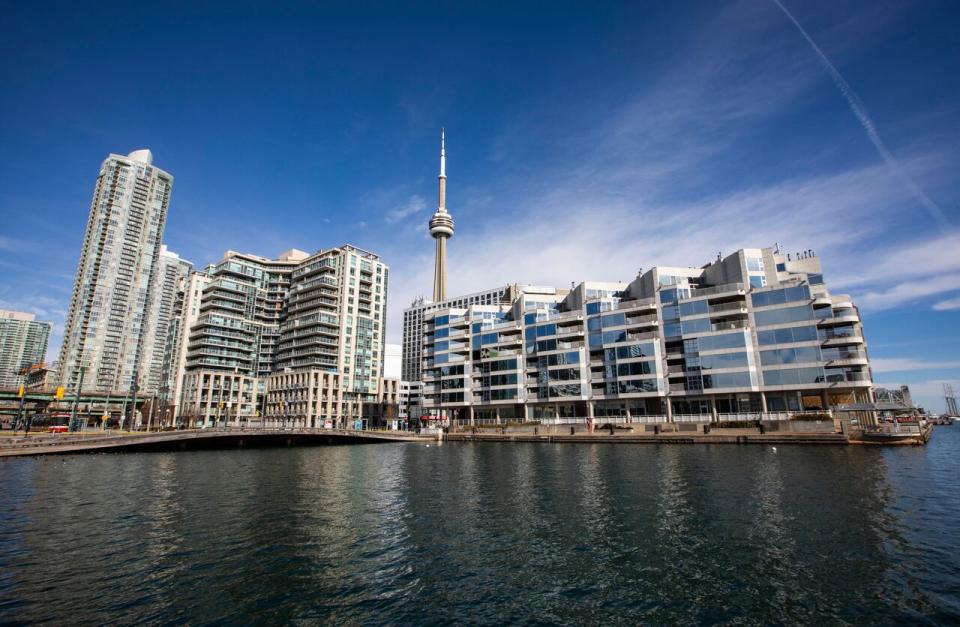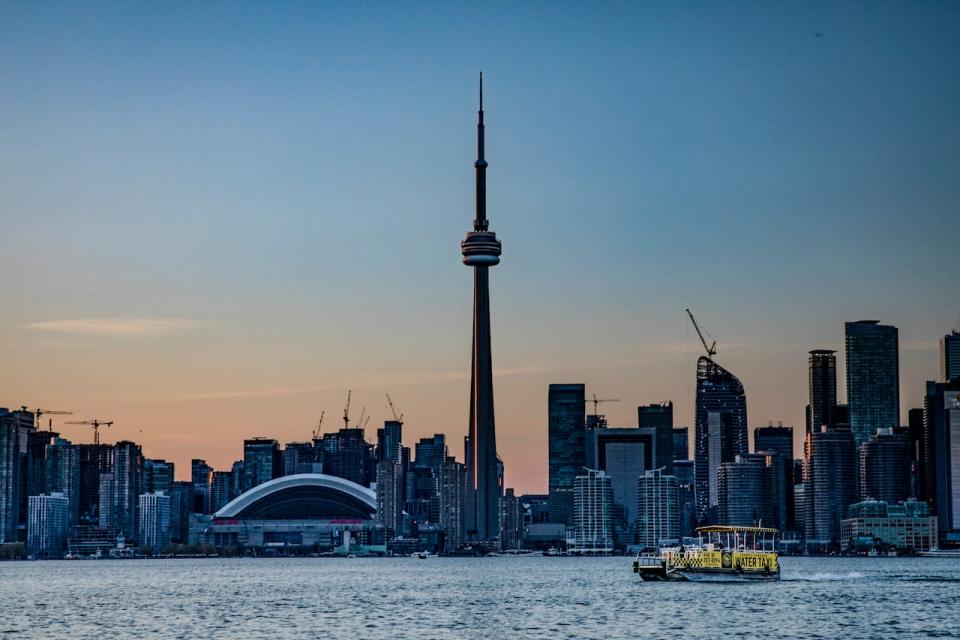Toronto's waterfront needs revamping, says business group report

Patios where you can eat and drink while floating on the edge of Lake Ontario. Valets who take care of your bicycle while you dismount to shop. A nightlife destination for arts and culture lovers.
Those were just some of the ideas to improve Toronto's waterfront put forward in a new report by a local business group hoping to boost business and attract more visitors to the area for longer periods of time.
"If Toronto wants to be considered a great city on the world stage, it's going to be because it maximized the opportunity it has here on the waterfront," said Tim Kocur, executive director of the Waterfront Business Improvement Association (WBIA), which wrote the report.
The 61-page waterfront retail review identifies current issues and charts a new potential path forward for downtown Toronto's lakeside district, bordered by Stadium Road in the west, Cherry Street in the east, Lake Shore Boulevard in the north and Lake Ontario the south.
The full potential of the waterfront has "yet to be unlocked," the BIA says in the report, partly due to previous development decisions that haven't fully satisfied the "diverse aspirations" of the tourists, office workers and residents who visit, work and live in the area.
"Such decisions can impact the long-term vibrancy of the district, potentially affecting its attractiveness to tourists, office workers, and residents who are in search of a dynamic and accessible retail environment but find it hampered by the existing constraints, forcing them to go elsewhere in the city," the report reads.
A 'lack of things to do' at waterfront, report says
While the waterfront attracts a huge number of visitors when the weather is warm — pedestrians and cyclists using the Martin Goodman Trail, families taking a ferry to the Toronto Islands, arts and culture enthusiasts attending Harbourfront Centre events — many don't stop at local shops or restaurants during those outings, according to the report.
Tourists book rooms at waterfront hotels because of the proximity to the city centre and the view, but might find themselves bored due to a dearth of activities and attractions, the report suggests. For example, while the waterfront is adjacent to two major tourist attractions — the CN Tower and Ripley's Aquarium — the report points out there are only five waters' edge restaurant patios, capable of serving around 450-550 customers.
"When [tourists] arrive, they might feel underwhelmed by the lack of things to do at the waterfront, considering that most waterfront cities worldwide are significant tourist attractions with various activities for visitors and are filled with waterfront-facing restaurants with patios facing the beautiful view," the report says.

The BIA says some ideas for attracting more visitors include more waterfront patio options, food halls, markets and a nightlife destination. (Heather Waldron/CBC)
Business activity in the area suffers from high commercial vacancy rates and a lack of variety, including a scarcity of "water-based businesses" and an "almost complete absence" of specialty retail, such as high-end clothing boutiques, which can attract shoppers from afar, the report says.
Foot traffic is hampered because most businesses are located on the north side of Queens Quay, the multi-modal main thoroughfare, which discourages pedestrians from "ping-ponging" back and forth between the lake and the businesses, the report says. Meanwhile, rules on signage and facades may restrict business visibility, according to the report.
Case studies of Baltimore, Chicago, Washington and San Francisco in the report highlight some ways those cities have designed their waterfronts, with floating markets, music venues, specialty retailers such as chocolatiers, playgrounds, waters-edge restaurants and more.
Showcase the lake, BIA recommends
To make Toronto's water-front "world class," the BIA recommends promoting a wider variety of businesses and attractions along with public space improvements that would result in a more "connected and continuous" waterfront that maximizes and showcases "the area's best shared asset – the water."
In addition to floating patios, bike valets and more nightlife options, other ideas floated in the report include: food halls, breweries, family-friendly restaurants, water-based businesses, a better mix of shops, murals, street furniture and more.
The report says local residents and businesses would benefit from better "wayfinding," including signs that make businesses, parks and parking options more visible.
Urban designer Ken Greenberg said businesses in the area need to step up their game to entice more local customers.
"Think of Ossington, for example, or think of Queen West or think of College Street or the Danforth or even parts of Bloor Street," he said.
"You've got a mix of different kinds of retail, a lot of independence, a lot of individually-creative responses, interesting places to eat, interesting places to gather. In some cases, you've got live entertainment. Think of things for kids."
Kocur said now is the time to improve the area — the report points to a number of other similar developments in progress, including Quayside, the Parliament Slip and the ongoing Port Lands reclamation project, directly to the east of the waterfront.
"Everyone's going to have to work together... all the different property owners working from the same playbook," he said.

